Your vehicle’s interior faces constant battles against heat, sunlight, and daily use. Over time, these elements quietly chip away at its comfort, appearance, and overall lifespan. When we think about protecting the outside of a car, paint protection and washing come to mind. But what about the inside—the leather seats, dashboard, and trim?
One effective yet often underestimated safeguard is window tinting. Beyond giving a sleek look, tinting plays a vital role in slowing down interior aging. In this article, we’ll explore how long vehicle interiors last with and without tinting, the science behind UV damage, and insights shared by Infinite Auto Works, a trusted name in the automotive protection space.
Why Vehicle Interior Longevity Matters
The role of sunlight in wear and tear
Sunlight is both friend and foe. It brightens your cabin but also bombards it with UV rays. Over months and years, this exposure slowly weakens the very fibers and coatings that make up your interior.
Common signs of interior deterioration
Drivers often notice faded seats, cracked dashboards, and brittle trims. These aren’t just cosmetic issues—they reduce comfort, resale value, and sometimes safety when glare and cracks interfere with visibility.
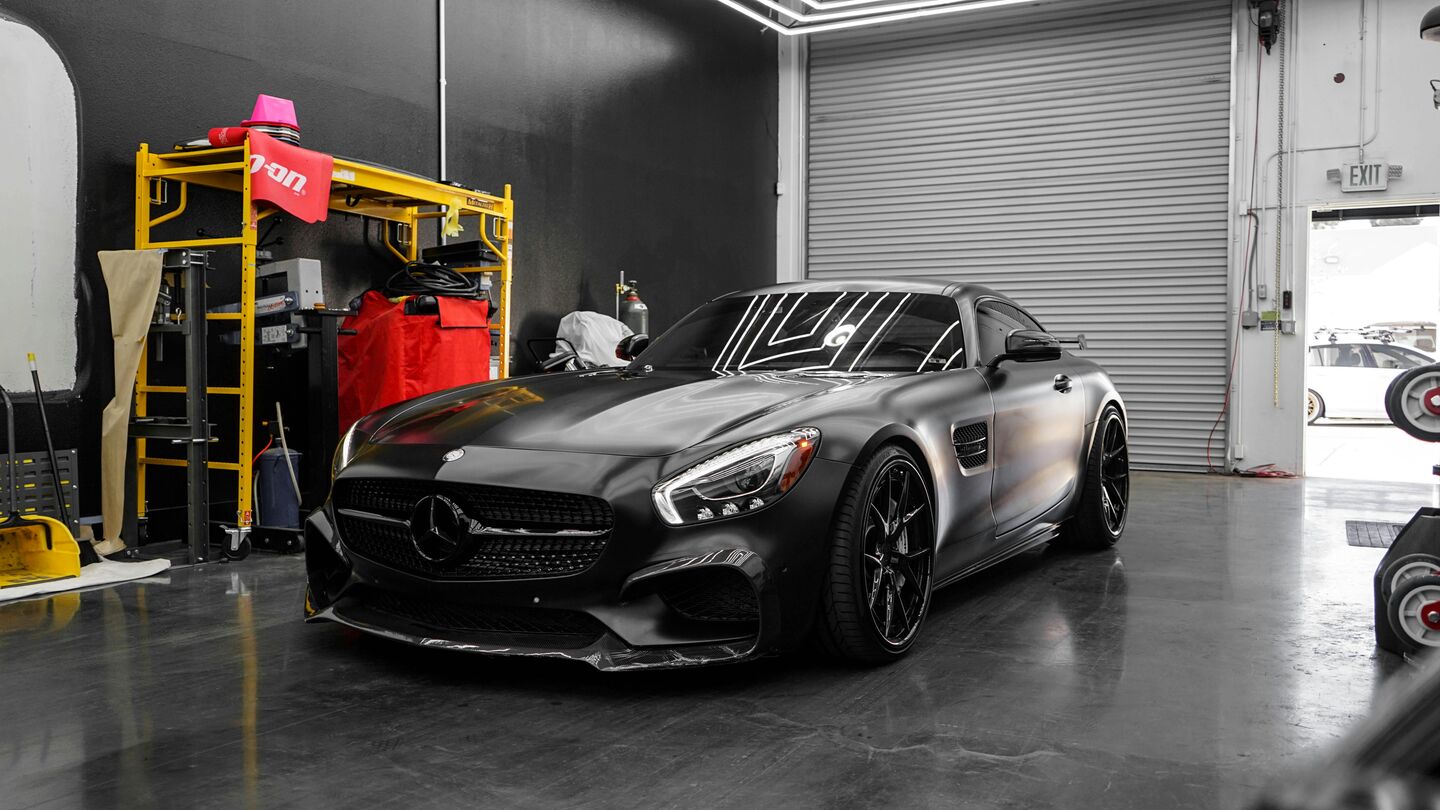
How Sun Exposure Affects Vehicle Interiors
UV radiation and its impact
Ultraviolet rays penetrate glass easily. Without tinting, leather fades, fabrics weaken, and plastics lose their structure.
Heat buildup inside the cabin
Temperatures can soar beyond 120°F inside a parked car. This heat accelerates drying, cracking, and warping of interior materials.
Fading and cracking of materials
Dark fabrics lighten, dashboards lose their sheen, and vinyl panels turn brittle. Left unchecked, entire surfaces may peel or split.
The Science Behind Window Tinting
How window tint films block UV rays
Quality tint films filter up to 99% of UV rays. This dramatically slows the degradation process, acting like sunscreen for your car.
Temperature control through tinting
Tint reduces heat absorption, keeping interiors cooler. Lower cabin temps mean less stress on adhesives, seams, and coatings.
Comparing Vehicles With and Without Window Tinting
Differences in fabric and leather longevity
Cars with tinting see seats that remain supple longer. Untinted interiors often crack after years of exposure.
Impact on plastic and dashboard surfaces
Tint protect dashboards from blistering and fading. In untinted cars, plastics often warp or discolor.
Case studies and research findings
Studies show that tinted interiors last several years longer in usable condition compared to untinted ones, with significant reductions in fading and cracking.
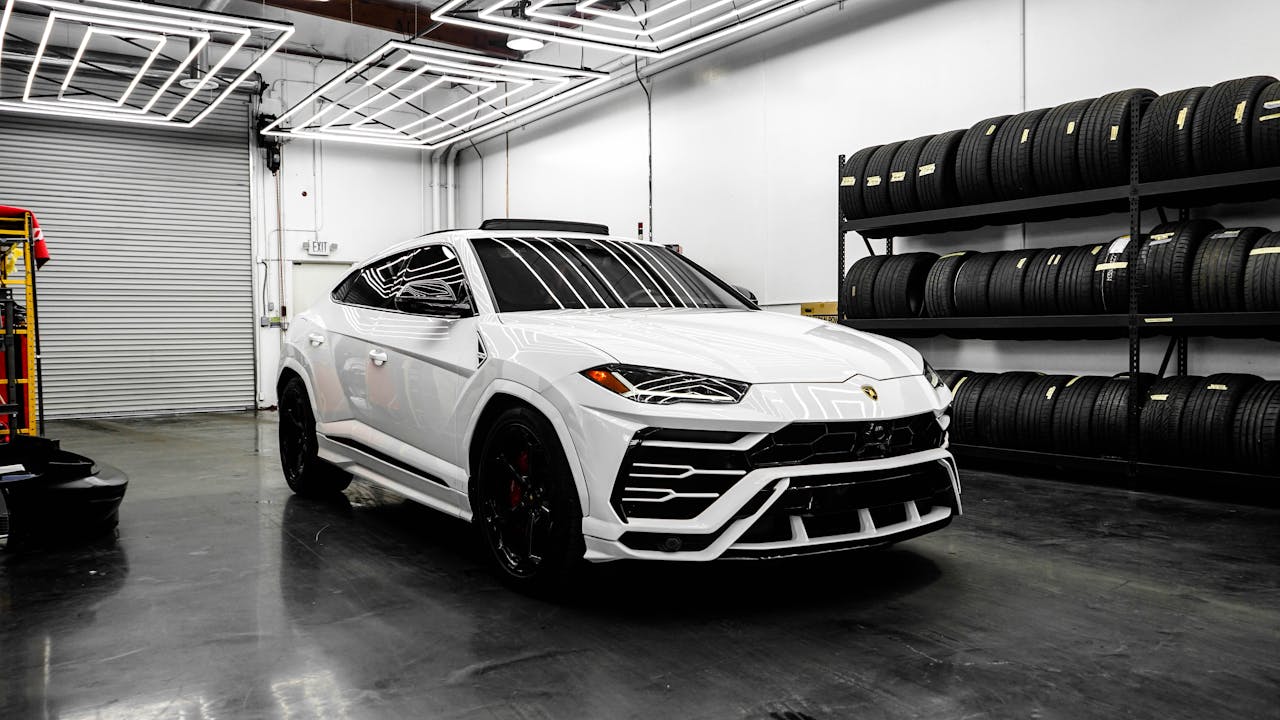
Long-Term Benefits of Window Tinting
Preserving resale value
Well-preserved interiors help vehicles maintain value. Buyers notice clean, undamaged cabins.
Enhancing driving comfort
Cooler cabins, reduced glare, and softer materials all contribute to a more pleasant driving experience.
Reducing long-term maintenance costs
Fewer repairs for cracked leather or warped dashboards mean lower ownership costs.
Myths and Misconceptions About Window Tinting
Tinting only for appearance?
Window Tinting Concord NC isn’t just aesthetic—it’s functional. The longevity benefits outweigh its style perks.
Does tint weaken glass?
No. Tint films actually strengthen windows slightly by holding shattered glass together.
Professional vs. DIY Window Tinting
Precision and film quality
Professional installation ensures full coverage, proper adhesion, and use of durable films.
Mistakes in self-application
DIY tint jobs often bubble, peel, or leave gaps, reducing protective benefits.
Environmental Considerations
How tinting reduces energy use in cars
Cooler cabins require less air conditioning. Over time, this lowers fuel or battery consumption.
Longevity and sustainability factors
Extending interior life reduces waste and replacement needs, supporting sustainability.
Real-World Examples from Infinite Auto Works
Observations on tinted vs. untinted vehicles
At Infinite Auto Works, installers see firsthand the stark contrast between tinted and untinted vehicles. Tinted cabins consistently show fewer cracks, less fading, and cooler temperatures.
Lessons from customer experiences
Customers often return after years, noting how tint preserved their interiors compared to friends’ untinted cars that aged more quickly.
Infinite Auto Works Serving the Wil-Mar Park and Beyond in Concord, NC
Infinite Auto Works is dedicated to serving the diverse needs of the local community of Concord, NC, including individuals residing in neighborhood like Wil-Mar Park With its convenient location near landmarks such as the “Beverly Hills Park, Dollar Tree” major intersections like “concord pkwy N & CHurch st n and wil-mar st nw & forest st nw” (coordinates: 35.429915841946254, -80.60676316984699), We offer Window tinting services.
Get Window Tinting Services at Wil-Mar Park Now
Navigate from Wil-Mar Park to Infinite Auto WorksNow
The Longevity of Vehicle Interiors With and Without Window Tinting
- Window Tint Lifespan & Types:
- Dyed tint: lasts ~3-5 years; prone to fading and discoloration
- Metalized tint: lasts ~5-7 years; durable but may interfere with signals
- Ceramic tint: lasts 10+ years; blocks up to 99% UV rays, highly durable
- Interior Protection Impact:
- Untinted windows allow 100% UV exposure → upholstery fades, cracks, and deteriorates faster
- High-quality tint blocks up to 99% of harmful UV rays, reducing fading and cracking significantly
- Tinted interiors stay cooler, reducing heat-related material degradation and air conditioning strain
- Statistical Highlights:
- Average vehicle interior lifespan without tint: 5-7 years before noticeable fading/cracking
- With ceramic tint: interior lifespan extended by 30-50%, often preserving condition beyond 10 years
- UV protection effectiveness: Untinted = 0%, Dyed tint ~50%, Metalized tint ~85%, Ceramic tint ~99%
- Visual Chart Concept:
- Bar chart comparing interior lifespan (years) with no tint vs dyed, metalized, and ceramic tint
- Pie chart showing % UV rays blocked by each tint type vs no tint
- Line graph illustrating interior temperature reduction (°F) inside vehicles with and without tint on hot days
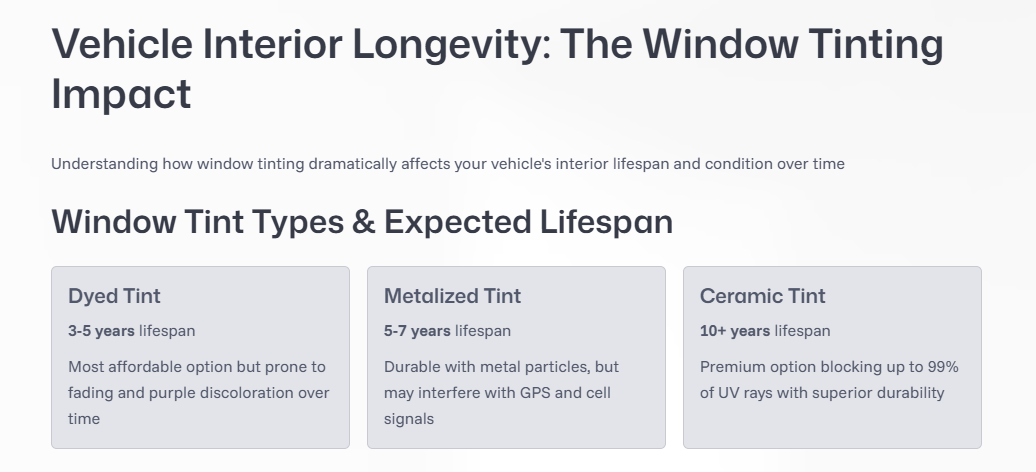
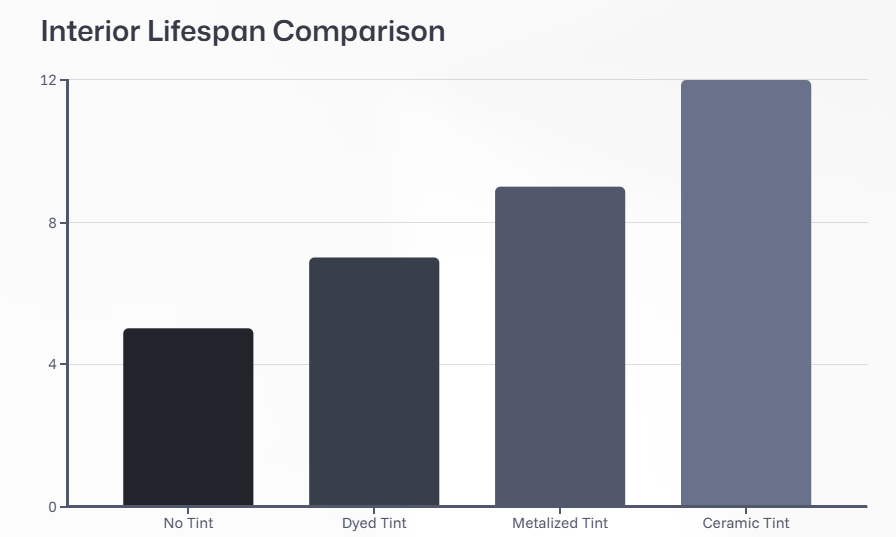

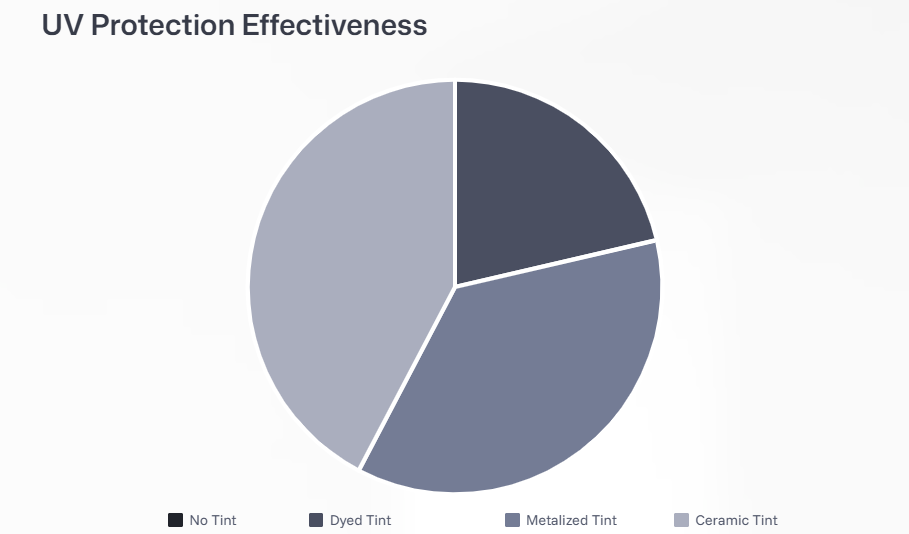
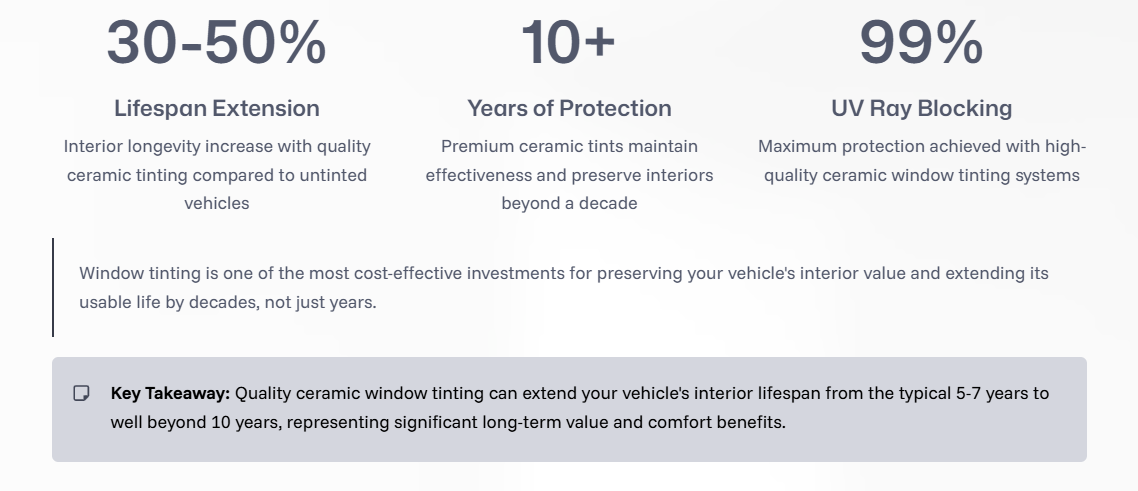
Sources: hhceramiccoatings.com (2025), flyingwindowtinters.com (2023), chicagoautopros.com (2025), madico.com (2019), truckparadise.com (2025)
The difference between tinted and untinted interiors isn’t subtle—it’s striking. Tinting reduces UV exposure, lowers heat, and extends the usable life of every component inside your car.
Protecting a vehicle’s interior is about more than comfort—it’s about longevity, value, and sustainability. With or without tinting, interiors will age. But with tinting, the timeline stretches years longer, saving money, effort, and disappointment. Backed by observations from Infinite Auto Works, it’s clear that window tinting plays a decisive role in keeping cars fresher for longer.
FAQs
How long do car interiors last without window tinting?
Typically, noticeable fading or cracking can begin within 3–5 years in sun-heavy regions.
Can window tinting completely stop interior damage?
No, but it dramatically slows the process by blocking UV rays and reducing heat.
Does every type of tint provide the same protection?
No, higher-quality films offer better UV filtering and heat control.
How does tinting affect leather seats compared to fabric seats?
Leather benefits greatly since tint prevents drying and cracking, but fabric also retains color longer.
Is window tinting worth it in cooler climates?
Yes, because UV rays still penetrate glass year-round, causing long-term damage even without extreme heat.
Our Other Blog Posts Related Window Tinting
Understanding How Window Tinting Reduces Morning Glare in Concord NC
